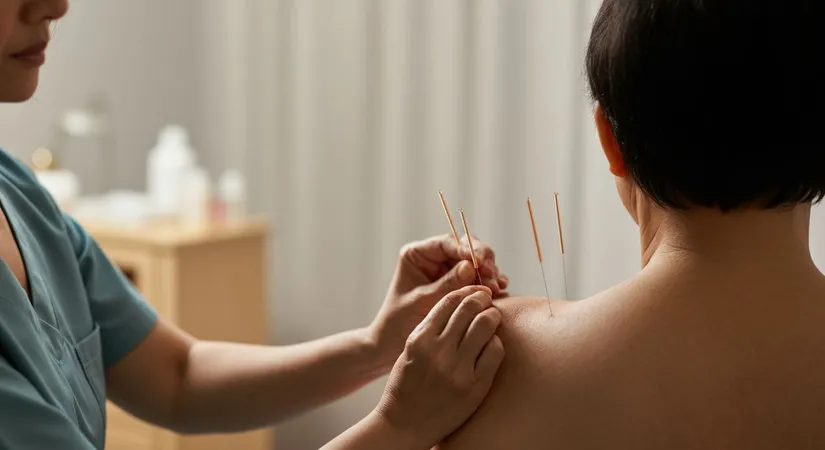Unlocking the Secrets of Health: From Hair Transplantation to Acupuncture
Understand how acupuncture, an ancient therapy, benefits modern holistic wellness by exploring its traditional and scientific aspects.
Introduction
Acupuncture, a hallmark of traditional Chinese medicine (TCM), has piqued the interest of Western science for decades. Proponents claim it offers therapeutic benefits for a range of conditions including pain relief, anxiety, and overall holistic wellbeing. This ancient practice, steeped in tradition and empirical evidence, uses fine needles to stimulate specific points on the body, aiming to restore balance between physical, emotional, and spiritual health. Understanding how does acupuncture work involves delving into an interconnected system where body, mind, and nature converge, inviting scrutiny and intrigue from various medical communities.
Understanding Acupuncture Therapy and Its Origins
The Evolution of Acupuncture Techniques
Acupuncture therapy has evolved significantly since its inception over 2,500 years ago. Initially rooted in traditional Chinese medicine (TCM), it emphasized maintaining balance and harmony within the body. Today, acupuncture incorporates modern research to refine techniques and improve efficacy, making it a vital component of integrative medicine.
One of the core principles of acupuncture is the concept of Qi, or life force energy, which is believed to flow through pathways in the body called meridians. By placing needles at specific meridian points, practitioners aim to unblock disturbances and facilitate energy flow, thereby supporting the body's natural healing processes.
Key Benefits of Acupuncture Therapy
- Non-invasive approach that emphasizes preventive care and holistic healing.
- Potential to alleviate various conditions, including pain, anxiety, and migraines.
- Growing scientific interest and celebrity endorsements enhance its credibility.
How Acupuncture Works for Pain Relief
- Identification of meridian points associated with pain symptoms.
- Insertion of needles to stimulate these points and promote energy flow.
- Activation of the body's natural pain-relief mechanisms, leading to reduced discomfort.
Acupuncture's integration into modern healthcare highlights its adaptability and enduring relevance. As research continues to explore its mechanisms, acupuncture therapy remains a promising option for those seeking alternative and complementary treatments.

How Does Acupuncture Work for Pain Relief and Anxiety?
Mechanisms of Acupuncture in Pain Management
Acupuncture treatment is believed to work by stimulating specific points on the body, which can influence various physiological processes. For pain relief, acupuncture is thought to activate the body's natural painkillers, such as endorphins, and enhance blood circulation. This process may also involve modulating the central nervous system to alter pain perception and promote healing.
For instance, a study found that acupuncture can significantly reduce chronic back pain by targeting nerve pathways associated with pain signals. Another example is its application in managing osteoarthritis, where acupuncture has been shown to improve joint function and reduce discomfort.
- Boosts the release of endorphins, the body's natural painkillers.
- Improves blood flow, aiding in the healing process.
- Modulates the central nervous system to alter pain perception.
Acupuncture's Role in Alleviating Anxiety
Acupuncture therapy is also utilized for its potential benefits in reducing anxiety. It is believed to influence neurotransmitter activity, particularly serotonin and dopamine, which play crucial roles in mood regulation. By promoting the synthesis of these chemicals, acupuncture may help stabilize mood and enhance emotional wellbeing.
For example, individuals with generalized anxiety disorder have reported decreased symptoms after regular acupuncture sessions. Similarly, those experiencing stress-related insomnia have found relief through acupuncture's calming effects.
- Targets specific points to influence neurotransmitter release.
- Enhances serotonin and dopamine levels for mood stabilization.
- Promotes relaxation and reduces stress-related symptoms.
Overall, acupuncture's integration into holistic healing practices underscores its versatility in addressing both physical and psychological conditions. As research continues, its role in comprehensive wellness strategies remains significant.

The Role of Traditional Chinese Medicine in Acupuncture
Integrating Acupuncture with Traditional Chinese Medicine Practices
Traditional Chinese Medicine (TCM) views acupuncture as a crucial component in maintaining the body's balance and harmony. This ancient practice is deeply rooted in the Yin-Yang philosophy, which emphasizes dualism and equilibrium in life. According to TCM, health issues arise from imbalances in Qi (energy) and Blood, and acupuncture aims to restore these elements to their natural state.
Modern practitioners of TCM adopt a holistic approach, combining acupuncture with other modalities like herbal medicine and Tai Chi. This integrative treatment plan not only addresses symptoms but also focuses on lifestyle and dietary changes to enhance overall health. For instance, a patient suffering from migraines might receive acupuncture alongside herbal remedies and Tai Chi exercises to promote relaxation and energy flow.
- Acupuncture realigns Qi and Blood to restore balance.
- Combines with herbal medicine for comprehensive treatment.
- Incorporates Tai Chi to enhance energy flow and relaxation.
Holistic Healing Through Acupuncture and TCM
Acupuncture's role in TCM extends beyond symptom management, aiming to support the body's self-regulating functions. This holistic healing approach is gaining traction as an alternative to conventional Western medicine, offering solutions that encompass mental, physical, and emotional health.
For example, acupuncture is used to treat seasonal allergies by strengthening the immune system and reducing inflammation. Similarly, it is employed for winter wellness, helping individuals maintain energy levels and prevent seasonal affective disorder. These practices highlight acupuncture's versatility in promoting overall wellness.
- Identify imbalances in Qi and Blood through TCM diagnosis.
- Apply acupuncture to specific points to restore harmony.
- Integrate lifestyle changes for sustained health benefits.
By embracing TCM's comprehensive view of health, acupuncture practitioners offer a unique perspective on wellness, addressing the root causes of ailments rather than just the symptoms. This approach not only enhances the effectiveness of acupuncture therapy but also enriches the patient's overall health journey.
Exploring Holistic Healing Through Needle Therapy
The Intersection of Mindfulness and Acupuncture
Acupuncture therapy extends beyond physical treatment, integrating mindfulness to enhance overall wellness. This approach encourages patients to engage in self-awareness and reflection, fostering a deeper connection between mind and body. By incorporating mindfulness practices, acupuncture can amplify its therapeutic effects, promoting mental clarity and emotional balance.
For instance, patients undergoing acupuncture for anxiety may practice mindful breathing during sessions, which can help reduce stress and improve treatment outcomes. Similarly, those seeking relief from migraines might use visualization techniques to complement the needle therapy, enhancing relaxation and pain management.
- Mindful breathing enhances relaxation during acupuncture sessions.
- Visualization techniques support pain management and emotional balance.
- Self-awareness practices deepen the mind-body connection.
Integrating Physical Exercises with Acupuncture
Physical exercises, when combined with acupuncture, can significantly boost the therapy's effectiveness. This integration supports the holistic healing philosophy by addressing both physical and energetic aspects of health. Exercises such as Tai Chi or yoga can complement acupuncture by enhancing flexibility, strength, and energy flow.
For example, individuals with chronic pain may incorporate gentle stretching routines alongside acupuncture to improve mobility and reduce discomfort. Additionally, those dealing with seasonal allergies might engage in breathing exercises to enhance lung capacity and support immune function.
- Identify suitable physical exercises to complement acupuncture goals.
- Incorporate exercises to enhance energy flow and physical strength.
- Monitor progress and adjust routines for optimal health benefits.
By integrating mindfulness and physical exercises with acupuncture, practitioners offer a comprehensive approach to health that addresses the interconnectedness of the body, mind, and spirit. This holistic strategy not only aids in managing illnesses but also encourages a proactive lifestyle, fostering long-term wellness and vitality.
Integrative Acupuncture Techniques for Holistic Healing
Traditional Chinese Medicine and Acupuncture Synergy
Frequently Asked Questions
How does acupuncture work for pain relief?
What are the benefits of acupuncture therapy for anxiety?
How is traditional Chinese medicine integrated into acupuncture treatment?
What role does mindfulness play in acupuncture therapy?
Can physical exercises enhance the effectiveness of acupuncture?
Discover the path to 'Healthy Beauty' with estethica's expert care. Call now for your free consultation and take the first step towards a more confident you!
📞 Call for Your Free Consultation